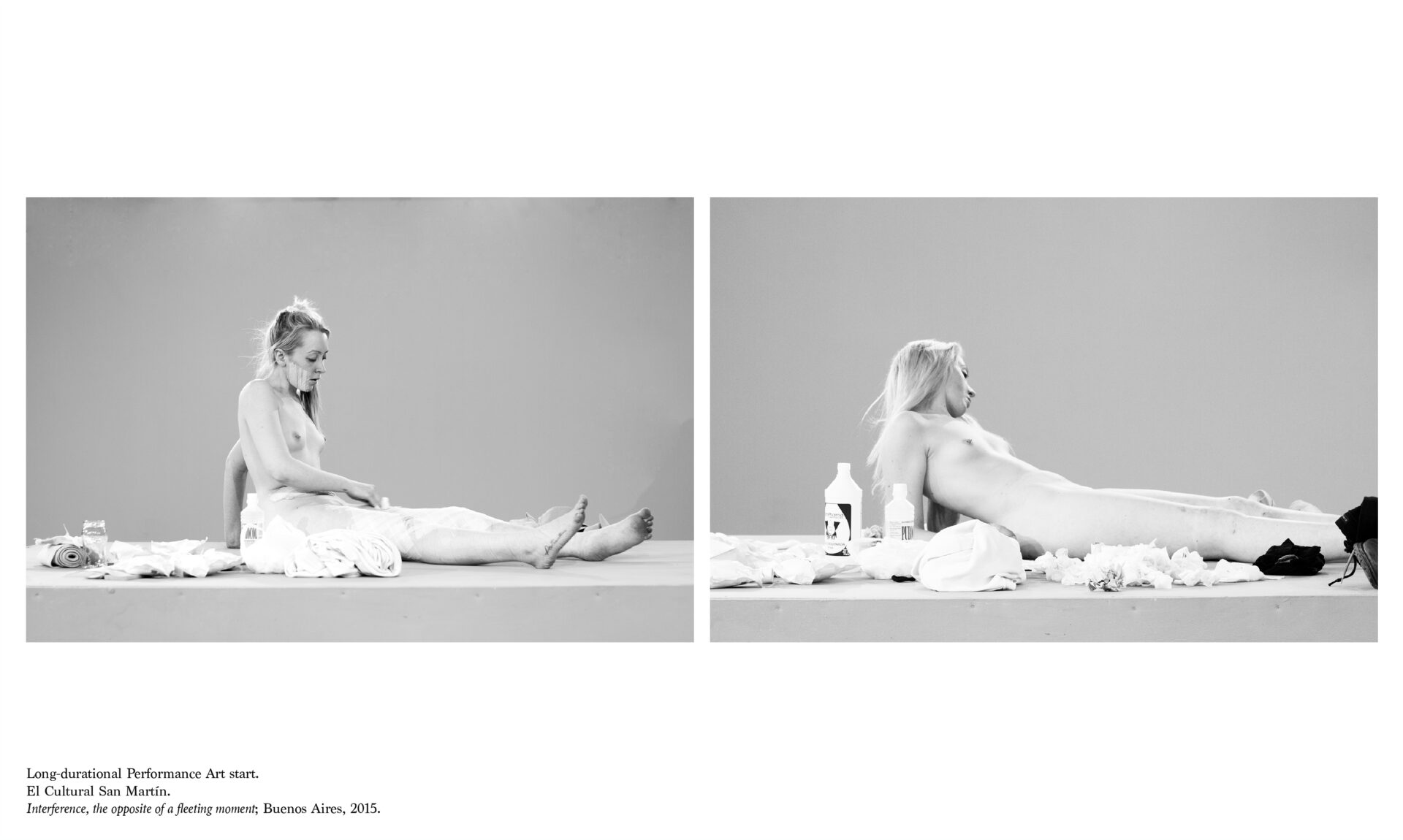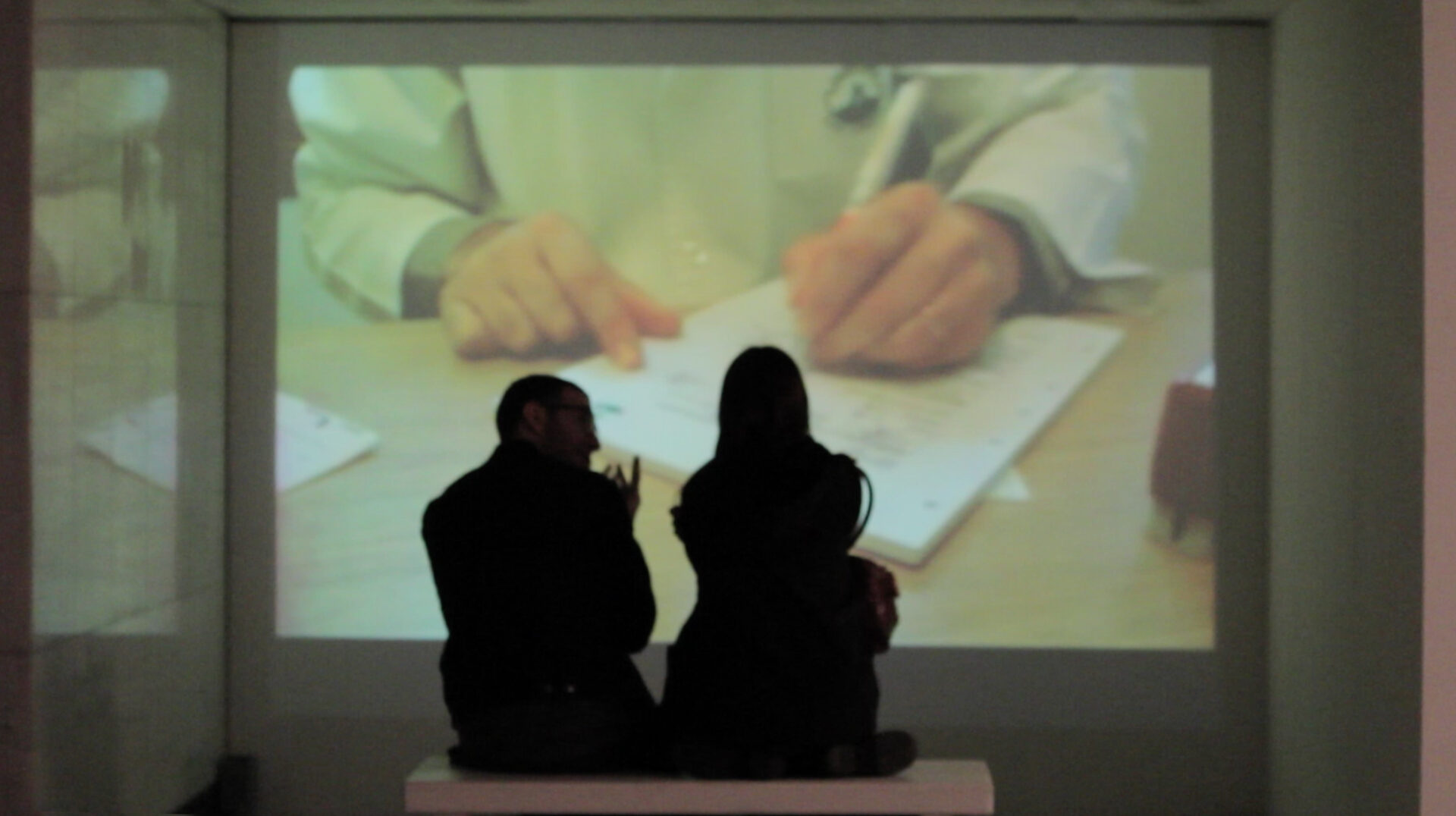Interferencia, evidenciar lo opuesto a un momento fugaz
Centro Cultural San Martin, Buenos Aires, Argentina, 2015.
Muestra individual.
Curaduría Mariano Soto
Coordinación Alejandro Cejas
Performance de un mes de duración.
Exhibición del proceso de recuperación tras someter mi cuerpo a varias cirugías plásticas.
Texto curatorial de Marcelo Dansey
Interferencia, evidenciar lo opuesto a un momento fugaz (Interference, the opposite of a fleeting moment)
Centro Cultural San Martin, Buenos Aires, Argentina, 2015.
Solo show.
Curated by Mariano Soto.
Long-durational performance, mixed-media installation, video.
Recovery process after having several plastic surgeries performed on my body.
After having several plastic surgeries performed on my body, I presented my recovery process throughout one month. The act of re-appropriating my own body in the form of a long-durational performance piece.
I kept a written record of the experience.
Day 1 after surgery
Three layers of bandages on swollen tissue barely allowed me to walk. Everything was slow, all actions were clumsy. I remember the way my body and my hair smelled, like rotten. My hair was sticky and I didn’t know to fix it. I felt safe knowing I wouldn’t be alone, that if I needed to search for a safe spot I’d have a familiar face to look for. It was the first time I had this kind of surgery performed, I didn’t know what I’d be dealing with, how my body would react, what way I was supposed to feel, how tired I would be. Without even noticing I was already in the middle of the room, taking care of my wounds. I was still under the effect of painkillers and anesthesia so the memory of that first day is vague and painless.
The room was very quiet, nobody spoke. I felt the presence of the spectators coming and going, moving around, without coming too close to where I was. A few of them came closer -but not too close- and took a quick look (so I think). I silenced my questions. I remained unchanged.
Day 9 after surgery
On stitches, apply hydrogen peroxide. Apply alcohol on the area once bandages are removed. Slowly massage the area, then clean and rebandage. Repeat. I remembered the procedure as I was instructed but it was my first time doing it. I wasn’t under painkillers or anesthesia anymore. I tore the dressings apart, it hurt like waxing. I breathed and continued. I wasn’t sure if it’d hurt less by doing it quickly, I didn’t want to damage the tissue. I looked and felt disoriented.
After two hours my body was clean, there was no trace of surgery. I couldn’t understand what I was seeing, there were only a few bruises left, the skin was swollen and shiny. I felt people coming closer to confirm the same as I was seeing.
Day 17 after surgery
He was covering his head with a magazine, I couldn’t see his face. I wasn’t going to respond either way, I had already decided on that beforehand.
He approached me with his face covered, he stood in front of me and asked:
– Do you feel improved now? – I didn’t answer. He insisted: – Do you feel more beautiful now? – Still no answer. He turned around, crumpled the magazine up and threw it on his way out. I continued cleaning my wounds.
Day 26 after surgery
I arrived with the same clothes I was wearing for work that day. I entered the room and started undressing to begin cleaning what was left of my wounds. The stitches were gone, the bruises were darker, the pain had eased.
It had been a long process, one expects to see some change but everything remained the same. Or maybe the way one perceives oneself is distorted.
Five people stood very close to me, I couldn’t see them but I could count them, that kept me focused while I continued with the gauze and the alcohol. They stayed for a long while, walking in circles, chatting. I couldn’t hear what they were saying. Once I finished I got dressed and left. I took the subway and went home to rest.












